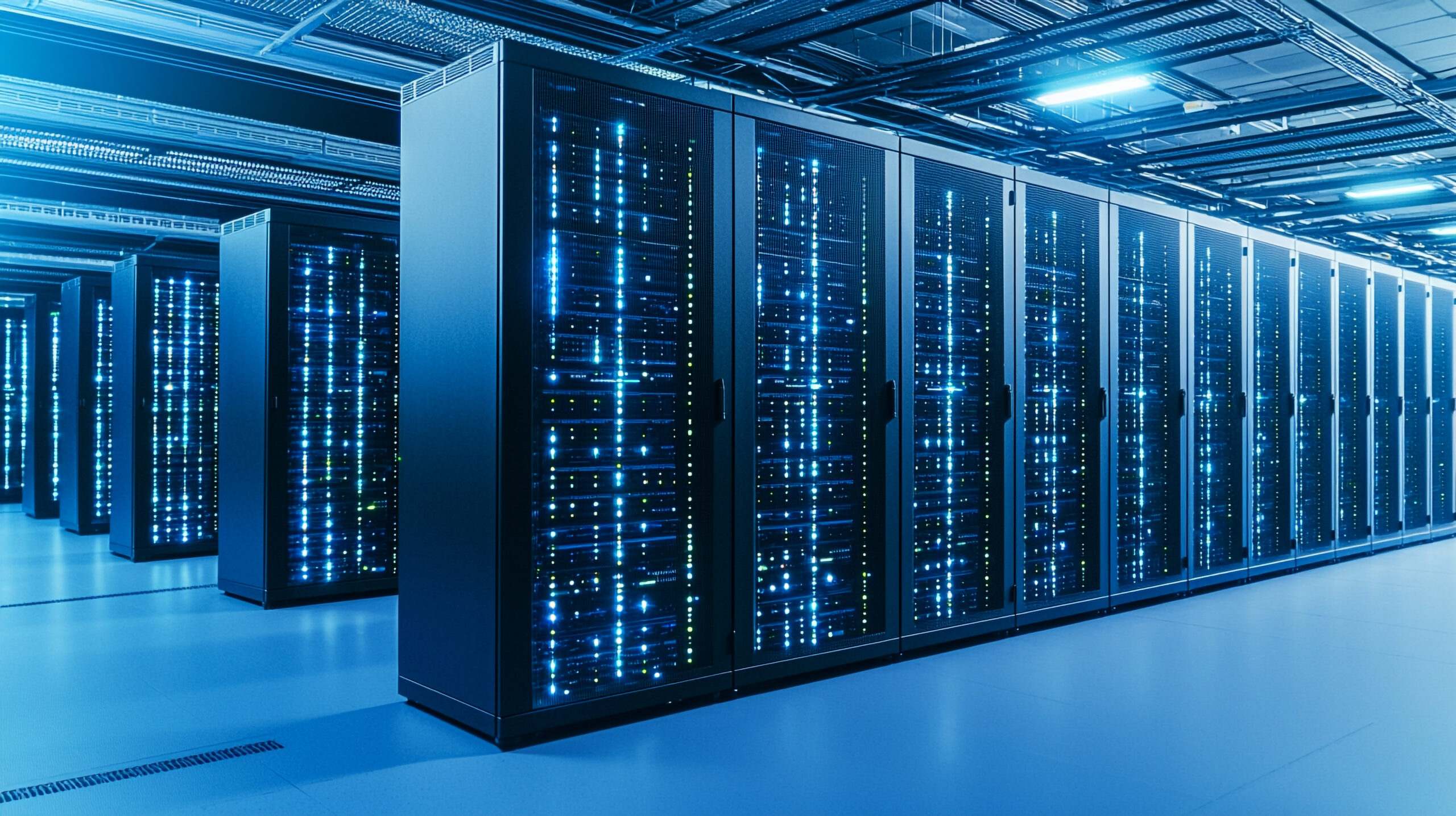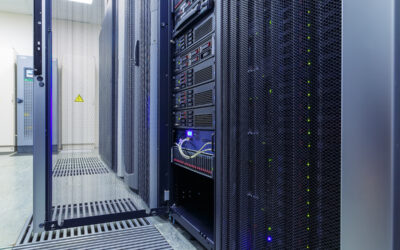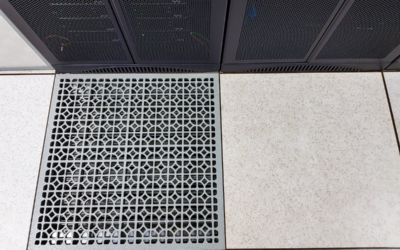Data Center Cooling Effectiveness Versus Efficiency17 min read

Data center cooling is one of the most important aspects of data center design and operation. With the increasing density of IT equipment, both effectively and efficiently cooling IT loads is becoming more challenging than ever.
For air cooled equipment, effective cooling for most data centers means providing the ASHRAE-recommended temperature and relative humidity of conditioned air at IT inlets. For liquid cooled equipment, effective cooling means providing a sufficient combination of liquid temperature and volumetric flow rate to maintain IT equipment component temperatures at or below desired limits.
Effective cooling does not guarantee efficient cooling, and efficient cooling does not guarantee effective cooling. While many data centers are effectively cooling their IT loads, most could be more efficient, with both air and liquid cooling.
With the dramatic rise of AI and other high-density loads, many data centers are having to implement liquid cooling. For some, this is a relatively simple transition. For many, the financial outlay and other challenges are significant.
The Case for Liquid Cooling
There is no doubt that liquid cooling can remove more heat than air cooling. As AI applications enter the data center, as rack densities rise, and as GPUs and other high-powered equipment become standard, there comes a point where air cooling is not enough. Facilities continuing to rely exclusively on air are going to be limited in the types of IT equipment they can support. For enterprise sites this means limiting the types of solutions their IT department can procure. For colocation providers it means having to turn away customers.
Some say the practical limit of air cooling is only 20 kW per rack. Others are effectively air cooling as high as 50 kW per rack, but it requires specialized infrastructure and architecture. Whatever the limit is for your facility, it is certain that more liquid cooling, not less, will be needed in the years ahead.
There are various numbers being thrown around about how much better liquid is than air for cooling. Some say water is twice as effective as air for cooling. Some say liquid is 200 times better. Others cite much higher ratios. It all depends on how you compare them. As usual, there are several properties to consider.
We know from personal experience that water is more effective than air for cooling. Leave a hot metal pan on the stovetop and it may take half an hour before you can pick it up with without injury. Run some cold water over it, though, and it is cool in seconds. Similarly, human bodies can cope with freezing air temperatures for many hours before the body shuts down. But immerse a person in water that is below 60℉ and death can ensue in half an hour or so as the body’s core temperature drops so rapidly.
While there are numerous liquids being used for cooling IT equipment, I will compare the thermal properties of air and water as a basis of understanding.
- Density – mass of a substance per unit volume (the following are approximations):
- Air – 20 kg/m³
- Water – 998 kg/m³, making water nearly 830 times denser
- Thermal conductivity – the ability of a substance to transfer heat:
- Air – 0.026 W/(m·K)
- Water – 0.58 W/(m·K) – Water’s thermal conductivity is roughly 23 times that of air
- Specific Heat Capacity – amount of heat energy required to raise the temperature of a unit mass:
- Air – 1000 J/(kg·K)
- Water – 4,181 J/(kg·K), allowing water to absorb over four times more heat per unit mass than air
- Volumetric Heat Capacity – the amount of heat required to raise the temperature of a unit volume of a material by one degree. It is the product of density and specific heat capacity:
- Air – 0.0012 MJ/m³·K,
- Water – 4.18 MJ/m³·K, indicating that water can absorb and store heat approximately 3,450 times more effectively per unit volume than air
Bottom line: Liquid can carry a lot more heat, but it doesn’t guarantee cooling will be effective or efficient. There is more to it.
Liquid Alone is Not Enough
Every kW of electricity consumed by the data center becomes a kW of heat that needs to be removed from the data center envelope. This all comes down to the basics. As my mentor Ken Brill (founder of the Uptime Institute) often said: “Power in; heat out. Always.”
It is relatively simple to bring 1 kW of power into the data center. It is a lot more complicated to remove the resulting 1 kW of heat from the building. Even if liquid cooling is implemented broadly, heat transfer takes place within the liquid itself. As the liquid makes contact with components (as in direct-to-chip liquid cooling) or the entire rack (as in immersion cooling), liquid rapidly draws heat from the hardware. However, the tubing or receptacle that contains the liquid warm up. That heat emanates into the surrounding environment. Further, the mechanical equipment used to circulate the liquid and cool the liquid also emit heat into the facility.
Thus, it is physically impossible to have a facility entirely cooled by liquid with no need for air cooling. No matter how efficient liquid cooling systems are, they will always be supplemented by air cooling. And as air cooling is a lot less expensive and simpler to implement, economics will play a role in maintaining a balance between air and liquid cooling.
Air Separation
For the full benefits of liquid cooling to be realized, both in terms of efficiency and effectiveness, air cooling must continue to be done well. This boils down to being able to properly separate the cool supply air from the warm or hot exhaust air. This fundamental remains as important now as it was 30 years ago.
If liquid cooling is to fulfill its promise, the heat emanating from its equipment, systems, and supporting infrastructure must be properly managed so that it is not contributing to data center inefficiency. Containment systems and other air management tools should be used extensively to ensure hot air does not mix with the cool air being fed into the equipment and into the server racks.
The bottom line is that as IT equipment manufacturers turn to liquid cooling to remove heat, many components in the data center will remain air-cooled for years to come. It is difficult to say when air cooling will be reduced to a minor element of data center cooling. The transition will happen gradually over the next few decades with air continuing to be a vital element in the foreseeable future. That future is going to be hybrid. To maximize the benefit of both air and liquid cooling, and translate liquid cooling efficiency into overall cooling effectiveness, hybrid facilities will become the norm. Some will have a LOT of liquid cooling. Others a little. These different cooling technologies will complement each other and provide a higher degree of effectiveness.
The industry's easiest to install containment!
AisleLok® solutions are designed to enhance airflow management,
improve cooling efficiency and reduce energy costs.
The industry's easiest to install containment!
AisleLok® solutions are designed to enhance airflow management,
improve cooling efficiency and reduce energy costs.








0 Comments